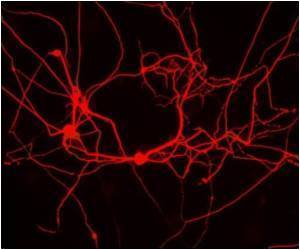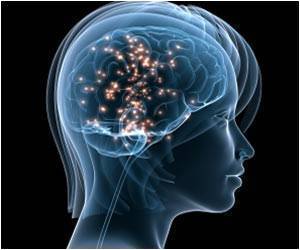A way to monitor how brain cells coordinate with each other to control specific behaviors, such as initiating movement or detecting an odor was developed by a team led by MIT neuroscientists.

"To understand psychiatric disorders we need to study animal models, and to find out what's happening in the brain when the animal is behaving abnormally," says Feng, the James W. and Patricia Poitras Professor of Neuroscience and a member of the McGovern Institute for Brain Research at MIT. "This is a very powerful tool that will really help us understand animal models of these diseases and study how the brain functions normally and in a diseased state."
Lead author of the Neuron paper is McGovern Institute postdoc Qian Chen.
Performing any kind of brain function requires many neurons in different parts of the brain to communicate with each other. They achieve this communication by sending electrical signals, triggering an influx of calcium ions into active cells. Using dyes that bind to calcium, researchers have imaged neural activity in neurons. However, the brain contains thousands of cell types, each with distinct functions, and the dye is taken up nonselectively by all cells, making it impossible to pinpoint calcium in specific cell types with this approach.
To overcome this, the MIT-led team created a calcium-imaging system that can be targeted to specific cell types, using a type of green fluorescent protein (GFP). Junichi Nakai of Saitama University in Japan first developed a GFP that is activated when it binds to calcium, and one of the Neuron paper authors, Loren Looger of the Howard Hughes Medical Institute, modified the protein so its signal is strong enough to use in living animals.
The MIT researchers then genetically engineered mice to express this protein in a type of neuron known as pyramidal cells, by pairing the gene with a regulatory DNA sequence that is only active in those cells. Using two-photon microscopy to image the cells at high speed and high resolution, the researchers can identify pyramidal cells that are active when the brain is performing a specific task or responding to a certain stimulus.
The researchers are now developing mice that express the calcium-sensitive proteins and also exhibit symptoms of autistic behavior and obsessive-compulsive disorder. Using these mice, the researchers plan to look for neuron firing patterns that differ from those of normal mice. This could help identify exactly what goes wrong at the cellular level, offering mechanistic insights into those diseases.
The researchers also plan to combine their imaging technology with optogenetics, which enables them to use light to turn specific classes of neurons on or off. By activating specific cells and then observing the response in target cells, they will be able to precisely map brain circuits.
Source-Eurekalert
 MEDINDIA
MEDINDIA




 Email
Email









